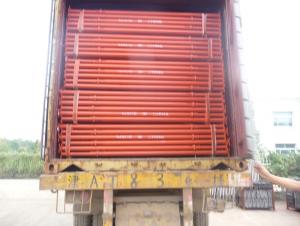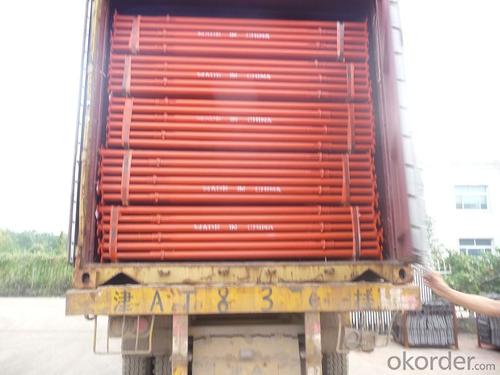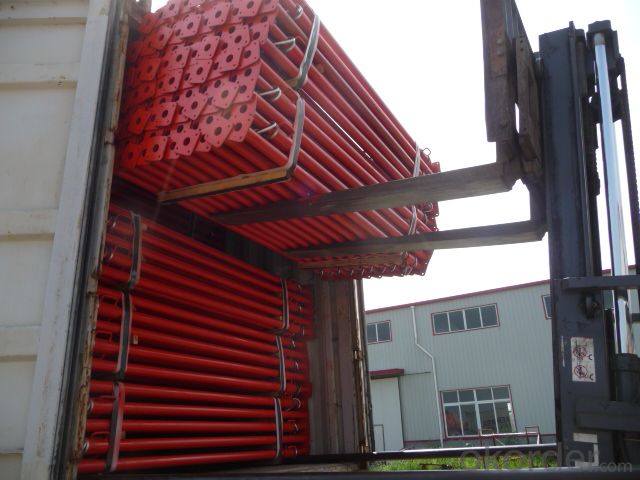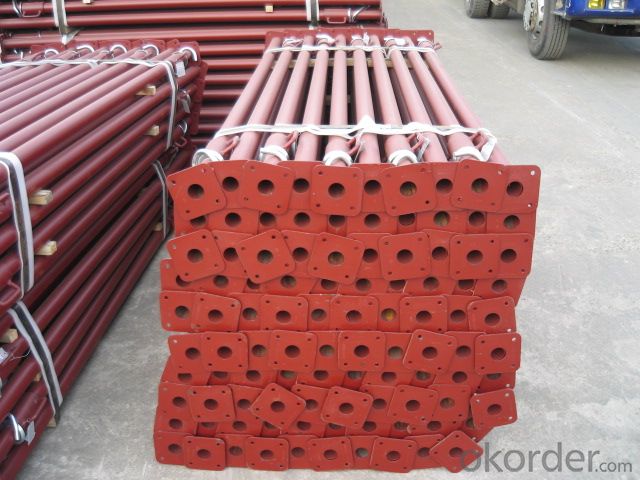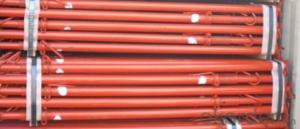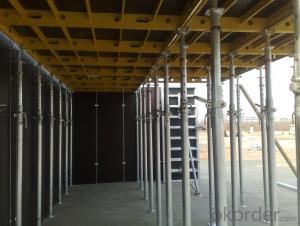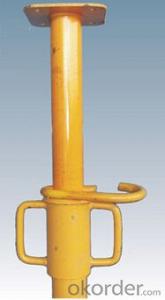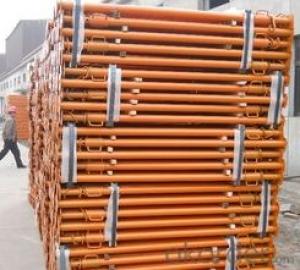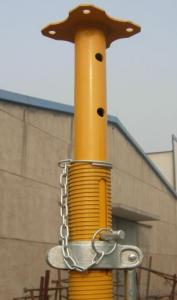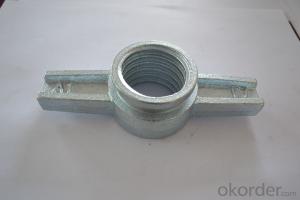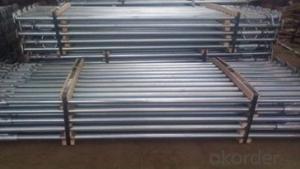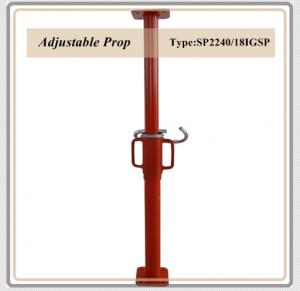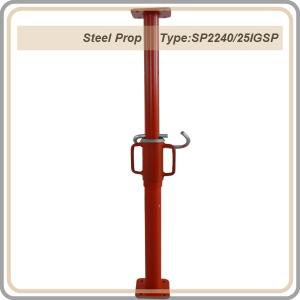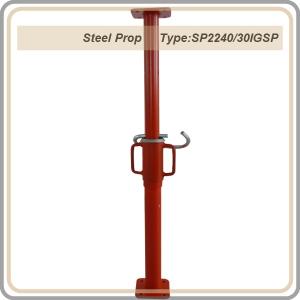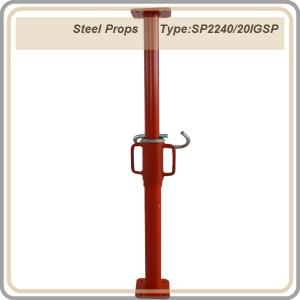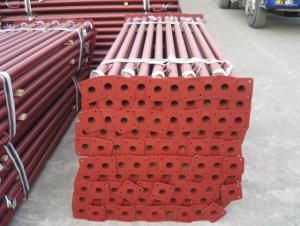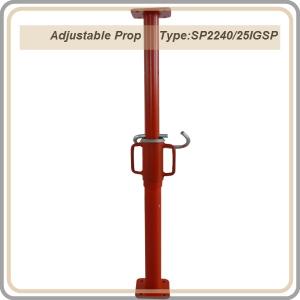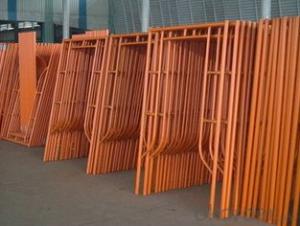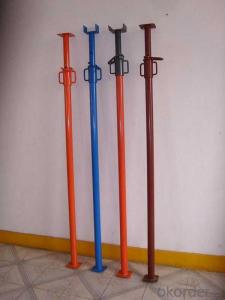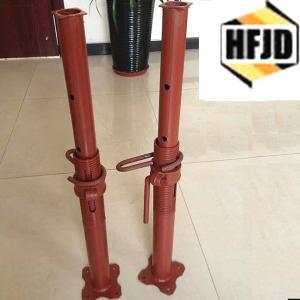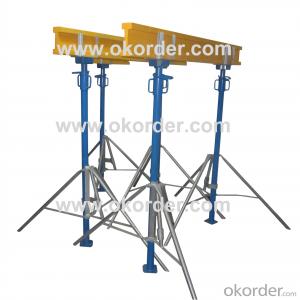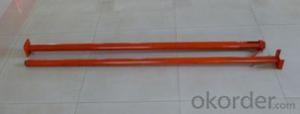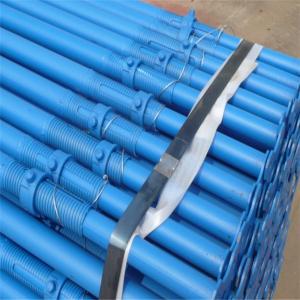Export Steel Props/red color prop 2.2-4M/thickness 1.8mm
- Loading Port:
- China Main Port
- Payment Terms:
- TT or LC
- Min Order Qty:
- 1680 Piece/Pieces 1680pcs / 20'FT container pc
- Supply Capability:
- 10000 pc/month
OKorder Service Pledge
OKorder Financial Service
You Might Also Like
1. Length 2200-4000mm
2. Outer tube diameter 56mm
3. Inner tube diameter 48mm
4. Tube material : Q235
5. Tube thickness : 1.8mm
6. weight : 10kgs
7. square plate : 120*120*4mm
8. Italian type nut
9. G-pin 12
10. Painted surface
11. Color : as customer 's request . red / blue / green / orange/ brown
Packaging & Delivery
| Packaging Details: | packaging :50pcs / bale container : 1680pcs / 20ft |
|---|---|
| Delivery Detail: | 20-30days after receive deposit |
Specifications
Adjustable props / construction prop
Height 2.2-4M
Italy type painted props
Adjustable props
Shoring props
Construction scaffold steel prop
Scaffold props
Telescopic steel props
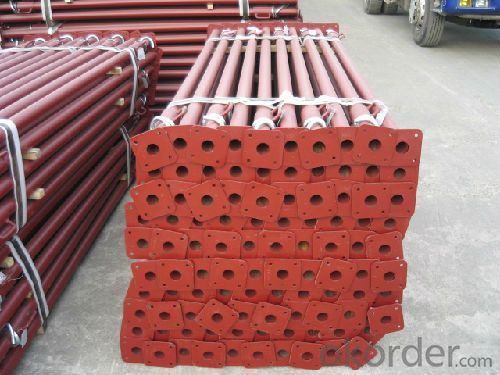
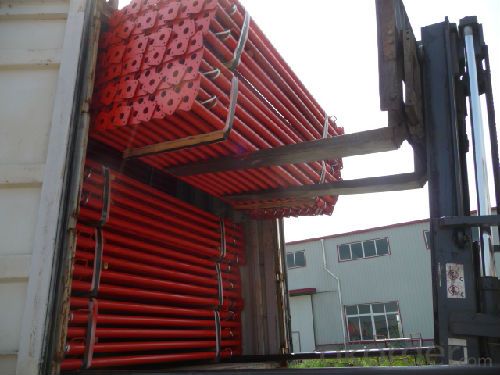
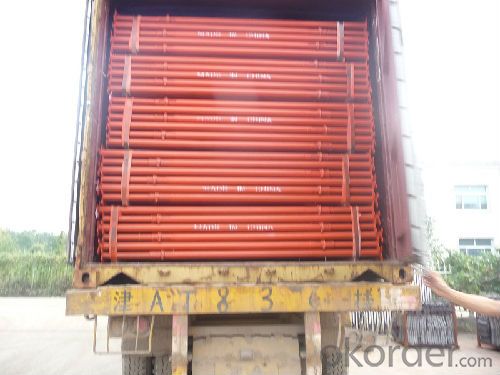
Product introduce
Steel Prop is a labour and time saving device to support shuttering and centering.
It is made outer tube of 60mm (O. D.) & inner pipe of 48mm (O. D.)
or outer tube 56mm (O.D.) & inner pipe 48mm (O.D.) ,
or outer tube 48mm (O.D.) & inner pipe 40 mm (O.D.) moving in each other telescopically.
The surface has painted , powder , electric galvanized and hot dipped galvanized .
The height use of props by double staging is recommended upto 7000mm only .
Top and bottom plate are provided with nail holes for wooden beam or steel beam .
The top has square shape , flower shape or U-head , U-fork head .
U-head can use fix or adjustable .
- Q: Can steel props be used to support heavy machinery?
- Yes, steel props can be used to support heavy machinery. Steel props are sturdy and durable, making them suitable for providing strong support to heavy loads.
- Q: Can a steel prop be used in combination with other support systems?
- Yes, a steel prop can be used in combination with other support systems. Steel props are versatile and can be adjusted to various heights, making them compatible with other support systems such as scaffolding or shoring. This combination of support systems provides enhanced stability and safety for construction or temporary structures.
- Q: Are there any alternatives to using steel props in construction?
- Indeed, there exist numerous alternatives to utilizing steel props in construction. Some prevalent options are as follows: 1. Aluminum Props: Lightweight and easy to manipulate, aluminum props have gained popularity as a substitute for steel props. They possess comparable strength and load-bearing capacity while exhibiting superior resistance to corrosion and reduced maintenance needs. 2. Timber Props: Also referred to as wooden props, timber props have been employed in construction for centuries. They offer cost-effectiveness, ready availability, and convenient adjustability to accommodate various heights. Nevertheless, timber props do not possess the same level of strength as steel props and may not be suitable for heavy-duty applications. 3. Hydraulic Props: Leveraging hydraulic cylinders for support, hydraulic props offer adjustable height and are ideal for situations that necessitate frequent adjustments. Typically used in applications demanding high load-bearing capacity, such as bridge construction or heavy machinery installations. 4. Acrow Props: Acrow props, constructed from steel tubes and featuring adjustability, are a type of telescopic prop commonly used for temporary support during construction or renovation projects. They are easy to install, adjustable in height, and possess a high load-bearing capacity. Their flexibility and user-friendliness often make them preferable to traditional steel props. 5. Composite Props: Composite props blend diverse materials, such as fiberglass and carbon fiber, to form lightweight yet robust support structures. These props boast excellent strength-to-weight ratios and exhibit resistance to corrosion and rust. They find common applications in weight-sensitive sectors like aerospace or marine construction. The selection of alternative props relies on factors such as specific construction requirements, load-bearing capacity, durability, cost, and ease of use. It is crucial to assess these factors before determining the most suitable alternative to steel props.
- Q: What are the alternatives to using steel props?
- Construction and supporting structures can utilize various alternatives to steel props. Some commonly used options include: 1. Aluminum Props: Lightweight and easy to handle, aluminum props are a favored choice for temporary support in construction projects. They boast a high load-bearing capacity and adjustable height capabilities. Furthermore, their resistance to corrosion makes them suitable for outdoor usage. 2. Timber Props: Also known as wooden props, timber props offer a traditional alternative to steel. They are cost-effective, readily available, and easy to install. Timber props are commonly employed in smaller construction projects or instances requiring temporary support. However, they may not match the load-bearing capacity of steel props. 3. Adjustable Telescopic Props: Comprising materials like aluminum, timber, or composites, these props consist of extendable sections that can adapt to different heights. This versatility makes them suitable for a range of construction applications. Adjustable telescopic props are lightweight, easily handled, and provide reliable support. 4. Hydraulic Props: By utilizing hydraulic pressure, these props deliver support and are typically used in mining operations or situations involving heavy loads. Hydraulic props possess the advantage of withstanding high loads and easy height adjustments. However, they necessitate specialized equipment and skilled operators to be effectively operated. 5. Composite Props: Constructed from materials such as fiberglass, carbon fiber, or reinforced polymers, composite props offer high strength-to-weight ratios, making them ideal for lightweight support requirements. They possess resistance to corrosion and can withstand heavy loads, although they may be more expensive than other alternatives. When selecting an alternative to steel props, it is crucial to consider project-specific requirements such as load capacity, duration of support, and environmental conditions. Consulting with a structural engineer or construction professional can assist in identifying the most suitable alternative for a particular project.
- Q: How do you check the stability and integrity of a steel prop?
- To check the stability and integrity of a steel prop, there are several steps that can be followed: 1. Visual Inspection: Begin by visually inspecting the steel prop for any signs of damage, such as cracks, bends, or deformations. Check for any signs of corrosion or rust that may weaken the structural integrity of the prop. 2. Load Capacity: Determine the load capacity of the steel prop by referring to the manufacturer's specifications or engineering documentation. Ensure that the prop is not being used beyond its maximum load capacity, as this could compromise its stability. 3. Plumbness and Alignment: Check if the steel prop is plumb and properly aligned. Use a spirit level or plumb bob to verify that the prop is perpendicular to the ground or the supported structure. Any significant deviation from verticality could indicate a stability issue. 4. Base Support: Examine the base support of the steel prop, such as the sole plate or base plate. Ensure that it is securely attached and in good condition. Look for signs of sinking or shifting of the base support, as this could affect the stability of the prop. 5. Connections and Fasteners: Inspect the connections and fasteners of the steel prop to ensure they are tightly secured. Check for any loose or missing bolts, nuts, or pins. Tighten or replace any compromised fasteners to maintain the structural integrity of the prop. 6. Load Distribution: Assess how the load is distributed on the steel prop. Make sure that the load is evenly distributed, and there are no concentrated loads that may cause excessive stress on certain sections of the prop. 7. Regular Maintenance: Establish a routine maintenance schedule to regularly inspect and maintain the steel props. This includes cleaning, lubricating, and repairing any minor damages. Regular maintenance helps ensure the long-term stability and integrity of the props. 8. Professional Inspection: In some cases, it may be necessary to engage a qualified structural engineer or a certified inspection agency to conduct a thorough assessment of the steel prop's stability and integrity. They can perform more detailed inspections, including non-destructive testing methods like ultrasonic testing or magnetic particle inspection. By following these steps, you can effectively check the stability and integrity of a steel prop, helping to ensure the safety and reliability of its usage.
- Q: Are steel props fire-resistant?
- In general, steel props exhibit fire resistance. Steel, being a non-combustible substance, does not ignite or promote the propagation of fire. Its resistance to heat and fire damage is attributed to its high melting point. Steel props are commonly employed in construction and temporary support systems to ensure stability and safety throughout building ventures. Nonetheless, it should be emphasized that steel can be compromised by intense heat, potentially resulting in the loss of its structural integrity. To preserve the fire resistance of steel props, it is advised to adhere to fire safety regulations and guidelines when implementing them in buildings or structures.
- Q: What are the typical costs associated with renting steel props?
- The typical costs associated with renting steel props can vary depending on several factors such as the duration of the rental, the quantity of props required, and the location. However, on average, the rental costs for steel props can range from $1 to $3 per day per prop. Additional charges may apply for delivery, installation, and any damages incurred during the rental period.
- Q: Can steel props be customized for specific projects?
- Yes, steel props can be customized for specific projects. Steel props are versatile and can be adjusted in height, width, and load-bearing capacity to meet the requirements of different construction projects. Customization allows for optimal support and stability, ensuring the safety and efficiency of the construction process.
- Q: How to strengthen the steel support of shear wall, can be applied to different construction environment
- The main material for cold rolled steel, with adjustable regulation. Construction is very convenient and easy to use
- Q: How do you transport steel props to different construction sites?
- Steel props can be transported to different construction sites using various methods such as trucks or trailers. These props are typically loaded onto the vehicles and secured properly to ensure safe transportation. Additionally, larger construction companies may have their own fleet of vehicles specifically designed for transporting heavy construction materials like steel props.
Send your message to us
Export Steel Props/red color prop 2.2-4M/thickness 1.8mm
- Loading Port:
- China Main Port
- Payment Terms:
- TT or LC
- Min Order Qty:
- 1680 Piece/Pieces 1680pcs / 20'FT container pc
- Supply Capability:
- 10000 pc/month
OKorder Service Pledge
OKorder Financial Service
Similar products
Hot products
Hot Searches
Related keywords
